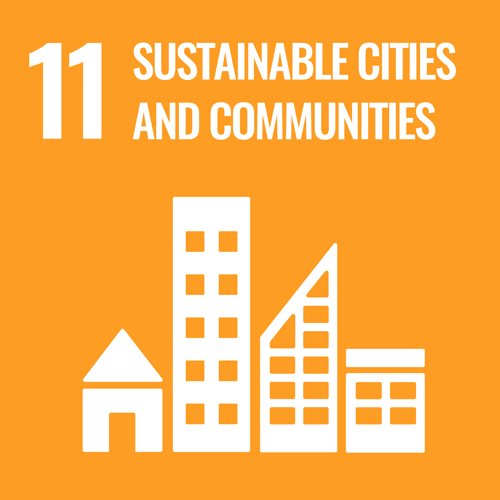By Sheri Hinish, IBM Sustainability Services Global Lead
Businesses cannot succeed in societies that are failing. The urgency of fulfilling the United Nations’ Sustainable Development Goals (SDGs) by 2030 is a global rally for climate action underpinned by systemic reform, social justice, and technology to help put humans and stewardship at the center of designing a better world.
When we look back at 2021, the Covid-19 pandemic taught us three radical lessons:
- Crisis forces commonality of purpose on one another: Global existential threats like climate change and the need for social equity affect everyone.
- The health and well-being of employees, and communities are as important to organizations as the health of the planet.
- Collaboration across industries to solve urgent humanitarian crises requires visibility, agility, responsiveness, and real-time insights to leverage unprecedented quantities of data.
Join IBM at AI for Good next week. Register here.
Digital makes sustainability visible and actionable—helping humans make better decisions
Sustainability, social impact, and shared values are key priorities on the corporate agenda as consumers, investors, trading partners, and employees look for trust and documented proof of performance, not just more ESG disclosures. These are some of the insights highlighted in IBM’s Institute for Business Value’s report, “The last call for sustainability: An urgent growth agenda for consumer products and retail.”
A broader sustainability agenda is increasingly defining a company’s prospects in today’s competitive marketplace. Moreover, pandemic-related events have created a paradigm shift as consumers rethink their priorities and lead with their values in a purpose, people and planet-positive economy. As the global business community races to net-zero post-COP26, solving complex and interconnected environmental and social issues will require companies to fundamentally rethink how they work together—and how digital and AI can accelerate the pace and scale of sustainable transformation.
To what extent are industry leaders responding to the call for sustainability? In IBM’s IBV’s January 2022 report, “Sustainability as a transformation catalyst: Trailblazers turn aspiration into action,” converting aspirations into reality are met with challenges—and to operationalize sustainable change, you need more than a coalition of the willing. The gap between intent and action is glaring, where only 4 out of 10 companies have identified the initiatives to close their sustainability gaps. Moreover, only one-third of companies have integrated sustainability objectives and metrics into business processes.
Yet, in the sea of unrealized ambitions, there is hope. The emergence of the “Transformation Trailblazers,” who make up 13% of executives surveyed, are considered the most successful in their sustainability journey.
“Leaders succeed when they integrate sustainability within their broader transformation strategies.”
Their success is underpinned by the deep integration of their respective sustainability agendas within their broader business and digital transformation strategies. Sustainability isn’t a department, a side project, or philanthropy. It’s good for business and good for the planet. Digital transformation is also very much human-centric, where the importance of talent and culture transformation cannot be overlooked.
Other key takeaways from the report:
- Trailblazers are winning with sustainability.
Between 2018 and the first half of 2021 trailblazers achieved an estimated cumulative revenue growth of 51%, a difference of nine percentage points over their next best performing peers. - Trailblazers rely deeply on a variety of technologies.
Trailblazers engage with, and deploy more technology than other companies, and 70% are using hybrid cloud to advance their sustainability objectives. The variety and depth of their technology stack enables them to do more with their data, driving better decisions and innovation. - Trailblazers have embedded sustainability across company functions and within their broader ecosystem.
Sustainability efforts show up across functions within the organization. Some 79% work effectively with their partners on sustainability engagements, 59% engage customers for sustainability input, and more than 50% have embedded sustainability within the core of their product innovation, manufacturing, and supply chain processes.
Answering the call to action spelled out in the SDGs requires investments in both digital technologies and human capital. As organizations embark on their transformation agenda, they must be intentional and ensure sustainability is a core design principal. Digital technologies can create new paths for tapping into the power of data and information—providing visibility into the environmental and social implications of business activities across supply chains. They also provide insight into opportunities for eco-efficiencies, such as process optimization to decrease CO2 while boosting profitability with the efficient use of natural resources.
Successful sustainability efforts happen when companies integrate them into the entire digital transformation journey. Realizing these benefits and their positive impacts at scale is possible. And the answer lies not in the faith of technology, but in the faith of people empowered by ethical innovation, inspired to improve the human condition and the world we share.
Learn how organizations can accelerate their sustainability journey here.
Sheri Hinish is recognized as a trusted advisor that companies consistently leverage for strategy. As the host of Supply Chain Revolution, a top podcast that evangelizes the future of supply chain, she possesses a unique PoV around supply chain, sustainability and the SDGs, talent and organizational change management, diversity as a business imperative, and digital transformation strategies. She has over 17 years leading and influencing transformations as a practitioner and consultant for Fortune 500 clients in consumer, technology, industrial, and disruptive innovation in e2e process and product design.
















